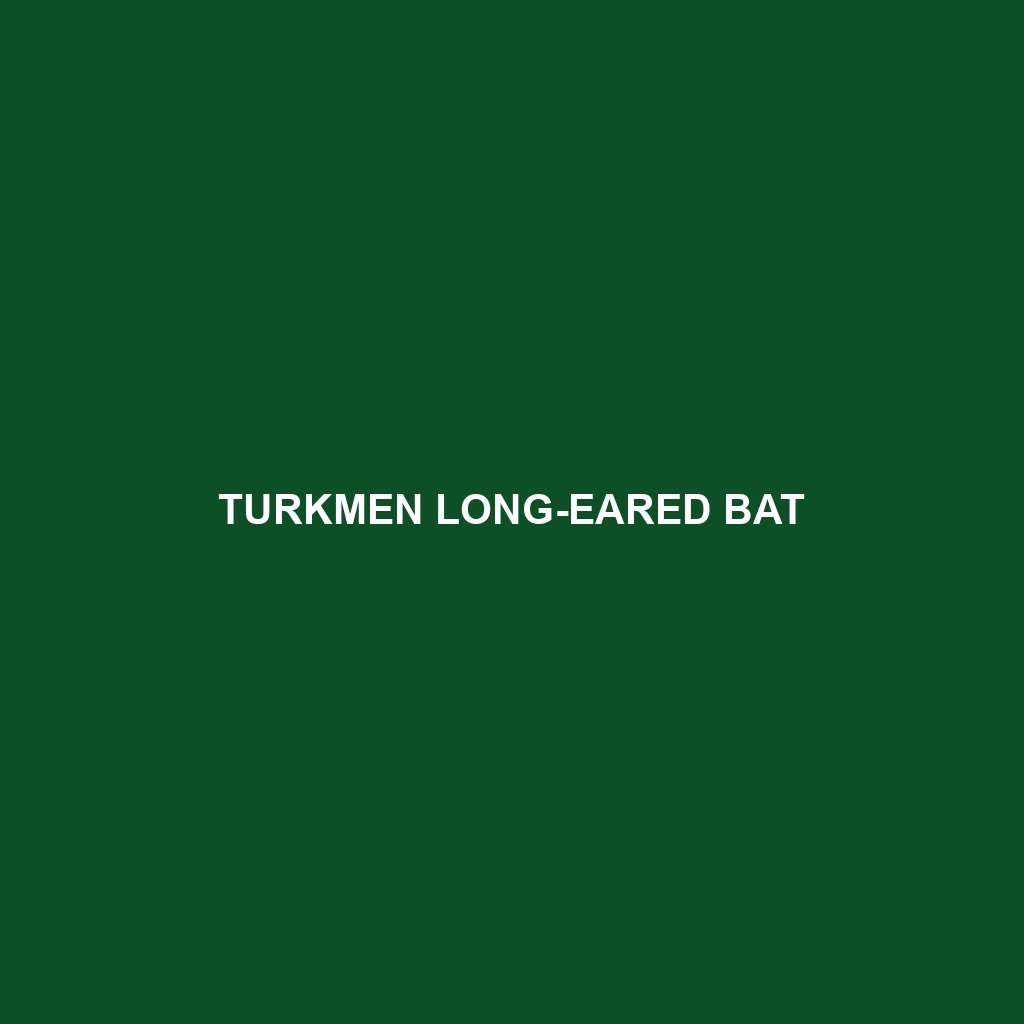Turkmen Long-eared Bat
Common Name: Turkmen Long-eared Bat
Scientific Name: Ashtaklobus turkmenicus
Habitat:
The Turkmen Long-eared Bat predominantly inhabits the temperate regions of Central Asia, particularly in Turkmenistan, Kazakhstan, and northeastern Iran. This species is typically found in rocky areas, including limestone caves and forested regions, where it can easily roost in crevices and tree hollows. The combination of natural shelter and proximity to water sources makes these environments ideal for their survival.
Physical Characteristics:
The Turkmen Long-eared Bat is characterized by its notable long ears, which can be almost as long as its body. Adult individuals typically measure between 9 to 11 centimeters in length, with a wingspan ranging from 25 to 30 centimeters. Their fur is usually a rich brown or grayish hue, blending well with rocky and forested habitats. Distinctive features include pointed wings and a small, rounded nose, enhancing their echolocation abilities for navigation and hunting.
Behavior:
This species is primarily nocturnal, foraging for food during the night. Turkmen Long-eared Bats are known for their agile flying skills, allowing them to maneuver skillfully through dense vegetation. They often roost in colonies, socializing in tightly-knit groups, which can enhance their reproductive success and protection against predators. Their echolocation capabilities are finely tuned, enabling them to detect prey even in low-light conditions.
Diet:
The diet of the Turkmen Long-eared Bat consists mainly of insects, with a preference for moths, beetles, and flies. These bats are expert hunters, utilizing their keen sense of hearing to locate prey while in flight. During the warmer months, they are particularly active in fields and near water bodies where insect activity is high, making them important for pest control in their ecosystems.
Reproduction:
Breeding typically occurs in late spring to early summer, with females giving birth to one or two pups per season. The young bats are nursed for several weeks before becoming independent. Maternity colonies are formed, where mothers can protect and rear their young together. After weaning, the pups learn to fly and hunt under the supervision of adults in the colony.
Conservation Status:
The Turkmen Long-eared Bat is currently listed as vulnerable due to habitat loss and environmental changes. Conservation efforts are essential to protect their natural habitats and ensure the stability of their populations.
Interesting Facts:
One fascinating fact about the Turkmen Long-eared Bat is its remarkable ability to adapt its echolocation frequency based on environmental conditions, allowing it to hunt effectively in diverse habitats. Additionally, these bats play a crucial role in their ecosystem by controlling insect populations, contributing to overall biodiversity.
Role in Ecosystem:
The Turkmen Long-eared Bat is an integral part of its ecosystem, helping to maintain insect populations and promote plant health through pollination and seed dispersal. By serving as prey for larger predators, they also contribute to the food web, highlighting their importance in maintaining ecological balance.
